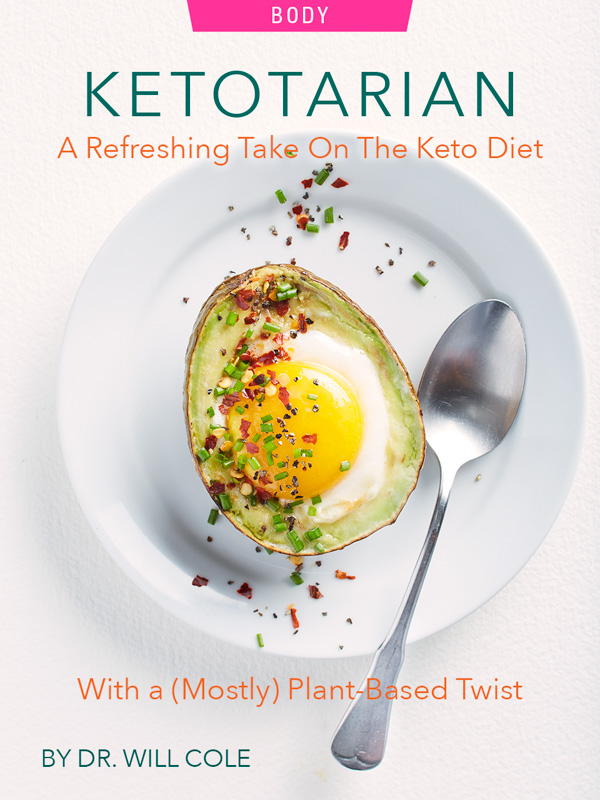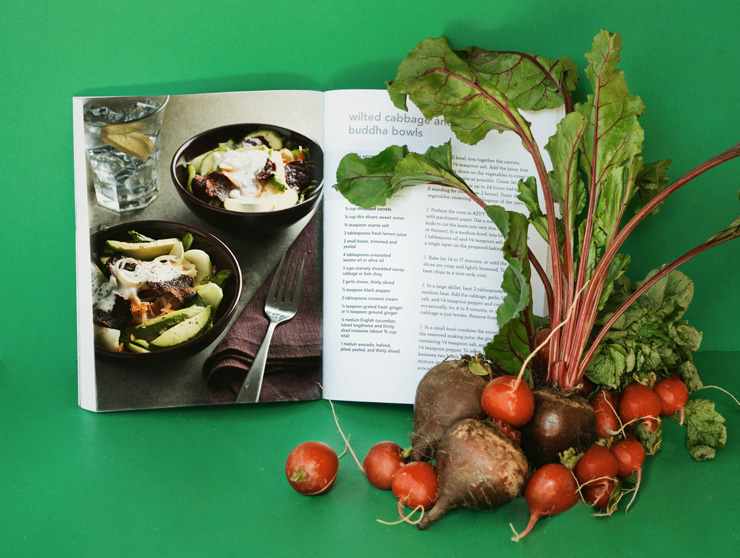
The Keto diet is not just for meat-eaters anymore; herewith, a (mostly) plant-based approach by a functional medicine doctor for achieving optimal wellness
—
As a functional medicine practitioner, I see people on a daily basis struggling through chronic health problems. It is my job to help get them to a place of thriving health. One of the most powerful tools for achieving this is through the food you eat on a daily basis. Since food has the ability to either feed disease or fuel health, it is important to choose foods that will push you toward healing rather than exacerbating your symptoms.
Over the years I have seen and heard about every diet imaginable. But through my years of clinical and personal experience I have seen what works and what doesn’t work when it comes to using food to heal. While every person’s biochemistry is different and will respond differently to certain foods — there are a few general principles that I see as beneficial for most people:
Plant foods are next-level disease fighters, high-carbohydrate diets are very inflammatory, and healthy fats are essential for multiple aspects of your health.
My plan, Ketotarian, was born out of combining all three of these principles together. At its core, ‘ketotarian’ is the marriage of the best of conventional ketogenic diets and the best of traditional plant-based diets without the common pitfalls that often go along with these two ways of eating. Ketogenic diets have been proven to help enhance brain function, restore energy, and stabilize blood sugar through transitioning your body from a sugar burning state to a fat burning state. Ultimately, this provides your body with a more sustainable form of fuel in the form of ketones from fat, instead of glucose from sugar which can give you a quick burst of energy but leave you crashing hard later.
Having stable blood sugar is an important part of wellness and a key element in a ketogenic diet.
You don’t have to be diagnosed with diabetes to have blood sugar problems and your blood sugar struggles may seem like ’normal’ things everyone struggles with or just a part of getting older. But just because something is common doesn’t make it normal.
These are the top 5 signs your blood sugar could be out of whack:
- You become irritable and ‘hangry’ (hungry/angry) if you miss a meal.
- It’s difficult for you to lose weight.
- You find yourself needing caffeine to get through the day.
- Your memory is not what it used to be.
- You feel like you need a nap after eating a meal.
A ketogenic diet can fuel your body with sustainable energy in the form of healthy fats and move you away from relying on sugar to give you energy.
The problem with conventional ketogenic diets however, is that they are typically heavy in meat and dairy which doesn’t take into consideration those with sensitivities to these foods or those who would rather be more plant-based. Overloading on conventional or processed meat and dairy sources can also end up being inflammatory, which can ultimately push you further from your health goals rather than closer. Ketotarian on the other hand, takes all the high-fat benefits of a traditional keto diet, but replaces the meat and dairy with nutrient-dense plant foods.
The difference between ketotarian and other plant-based diets is the types of plant-foods that make up what you eat.

All too often I see people eating conventional vegan or vegetarian diets eating mostly grains, legumes, and soy and surprisingly few vegetables. This ‘carbotarian’ way of eating can quickly turn inflammatory and is limited in important nutrients. Ketotarian brings vegetables back into focus, which have been shown to help fight cancer, lower blood sugar, and improve detoxification.
Essentially, ketotarian is a keto diet with a plant-based twist — a low-carb, moderate protein, high-fat diet that is able to put your body into a state of ketosis through eating a variety of healthy fat-rich plant-foods. The overall principles are simple.
- Eat real food.
- Keep your carbs low.
- Keep your healthy fats high.
- If you eat a non-starchy vegetable, add some healthy fats.
- If you eat a healthy fat, add some non-starchy vegetables.
- Eat when you are hungry.
- Eat until you are satiated, then stop.
But you don’t have to eat like a rabbit to go plant-based keto.
The foods that you get to eat are not only nutritious, they are delicious as well. I go into more detail in my book Ketotarian, which also has over 85 vegan, vegetarian, and pescatarian recipes, but here are some examples of the foods you get to enjoy.
Healthy-Fats
- Coconuts – coconut oil, coconut milk, dried unsweetened coconut, etc.
- Avocados – whole avocados, avocado oil
- Olives – whole olives, olive oil
- Nuts – almonds, walnuts, etc.
- Eggs – for vegetarians
- Wild-caught fish – for pescatarians
Protein
Plants do have protein! These are some of my favorite high-protein plant sources.
- Hempeh (tempeh made from hemp seeds): 22 grams protein per 4 ounces hempeh
- Natto (organic non-GMO): 31 grams protein per 1 cup natto
- Tempeh (organic non-GMO): 31 grams protein per 1 cup tempeh
- Hemp protein powder: 12 grams protein per 4 tablespoons powder
- Hemp hearts/seeds: 40 grams protein per 1 cup hemp
- Nutritional yeast: 5 grams protein per 1 tablespoon yeast
- Sacha inchi seed protein powder: 24 grams protein per 4 tablespoons powder
- Spirulina: 4 grams protein per 1 tablespoon spirulina
- Almond butter: 6 grams protein per ¼ cup butter
- Almonds: 12 grams protein per ½ cup almonds
- Artichokes: 4 grams protein per ½ cup artichokes
Carbohydrates
These will come from non-starchy vegetables and low-fructose fruits.
- Dark leafy greens – kale, spinach, Swiss chard, etc.
- Berries – blueberries, blackberries, raspberries
So, what exactly can you eat in a day? Here’s a typical day of plant-based keto:
Breakfast
A fat-loaded smoothie makes a great breakfast as you can pack a lot of nutrient-dense ingredients into one beverage. Fats wake your brain up and you can mix up your smoothie each day but one of my favorite combos is coconut milk, spinach, a few blueberries, chia seeds, and half an avocado.
Lunch
For those who eat eggs, a simple frittata is great because it is easy to heat up for lunch and you can add in olives and spinach and top with avocado slices.
Dinner
Tacos are quick, simple, and have a variety of options. I like to roast up some cauliflower, wrap in lettuce, and top with extra guacamole and detox-supporting cilantro.
My goal with Ketotarian was to show everyone that food can be both delicious and healing. The ketotarian approach is ultimately about removing dieting dogma and shame — and loving yourself enough to nourish yourself with good food medicines. There should be a grace and lightness to wellness and I hope that wherever you are on your health journey, Ketotarian can walk alongside you and help you achieve your next level of wellness.
You may also enjoy reading 7 Insanely Healthy Foods to Fight Inflammation by Sarah Peterson
